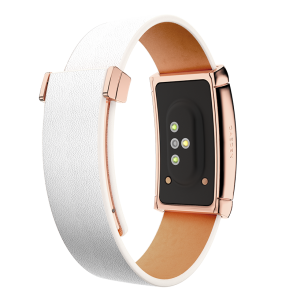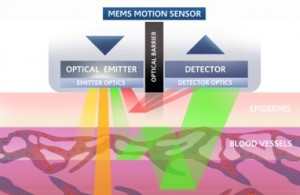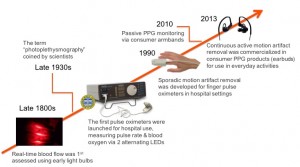Most wearable devices use optical technologies to evaluate heart rate as we have specify earlier in the post: ” The base of non-intrusive wearables“.
Raw data has to be processed by algorithms into motion-tolerant heart rate data, calculating additional biometrics such as VO2, calories burned, R-R interval, heart rate variability (HRV), blood metabolite concentrations, blood oxygen levels, and even blood pressure.
Recent wearables come to the market with some of those parameters such as HRV included in the feed-back control for the user. This is the case of SONA-sensor
Sona Connected Bracelet for Mind & Body from CAEDEN on Vimeo.
Loose applications such as stress removal do not require acurate sensors, but other health monitoring applications do require real-time accurate sensors that take into account: noise, movement artefacts, skin tan, degree of perfusion in the area of measurements… in other words individual adaptation or personalized data. On that environment, accurate objetive measurements might be difficult to achieve, but on the contrary personal adapted evaluation of risk factors can easily be obtain with Machine Learning (ML) techniques focused on individual changes. This is the real value of the pSHD (personal Small Health Data).



